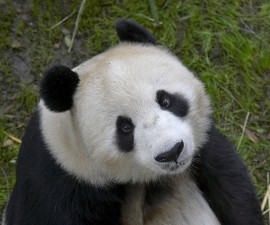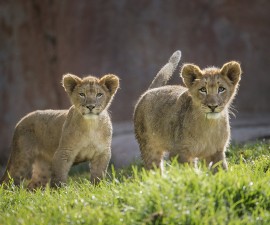There was big news in March at the San Diego Zoo’s Dan and Vi McKinney Penguin Habitat at Conrad Prebys Africa Rocks: the animal care staff welcomed the first chicks to hatch from eggs laid by our own breeding pairs!
BY Eston Ellis
Photography by Ken Bohn
Barbara, whose parents are Simon and Norrine, hatched on March 7; and Doug, whose parents are Danny and Malloy, hatched on March 10. Two other penguin chicks—Dot and Lucas—hatched last year at the Avian Propagation Center, but they were from eggs supplied by the Minnesota Zoo. Doug and Barbara are the first chicks that were both conceived and hatched by parents in the Zoo’s now-33-member African penguin breeding colony—a happy milestone for the San Diego Zoo.
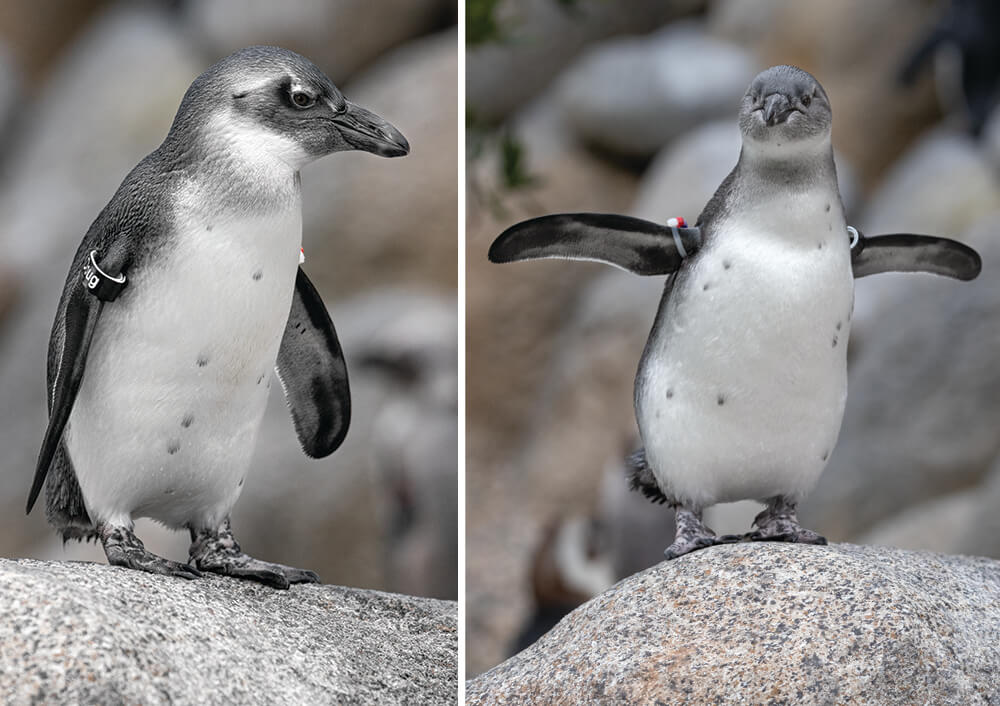
MEET DOUG AND BARBARA
Since these two African penguin chicks hatched at the Zoo’s Cape Fynbos habitat in March, they have grown from fluffy chicks into confident youngsters that now weigh as much as their parents.
“It’s very exciting,” said Lara Jones, a keeper who has worked closely with the new chicks. Both chicks hatched from eggs that were cared for and incubated by their parents, Lara explained. “Our chicks were both hatched by first-time parents, so we were watching to see that they were not only feeding their chick, but that they were taking turns, so that one parent wasn’t doing all the work and getting tired out. Both parents, in each case, were doing their part.”
The hatchlings were of interest to the penguin colony, as well. “Our chicks hatched toward the end of the breeding season, so we had a lot of looky-loos, once the chicks were a couple of days old,” Lara said. “But the parents were so protective—they didn’t let any other penguins come close.”
Doug and Barbara grew quickly, and they reached near-adult size just three months after hatching. “They weigh just as much as their parents now,” Lara said. “Soon, they will be adding their genetic contribution to the world’s endangered population of African penguins—and that’s very significant.”
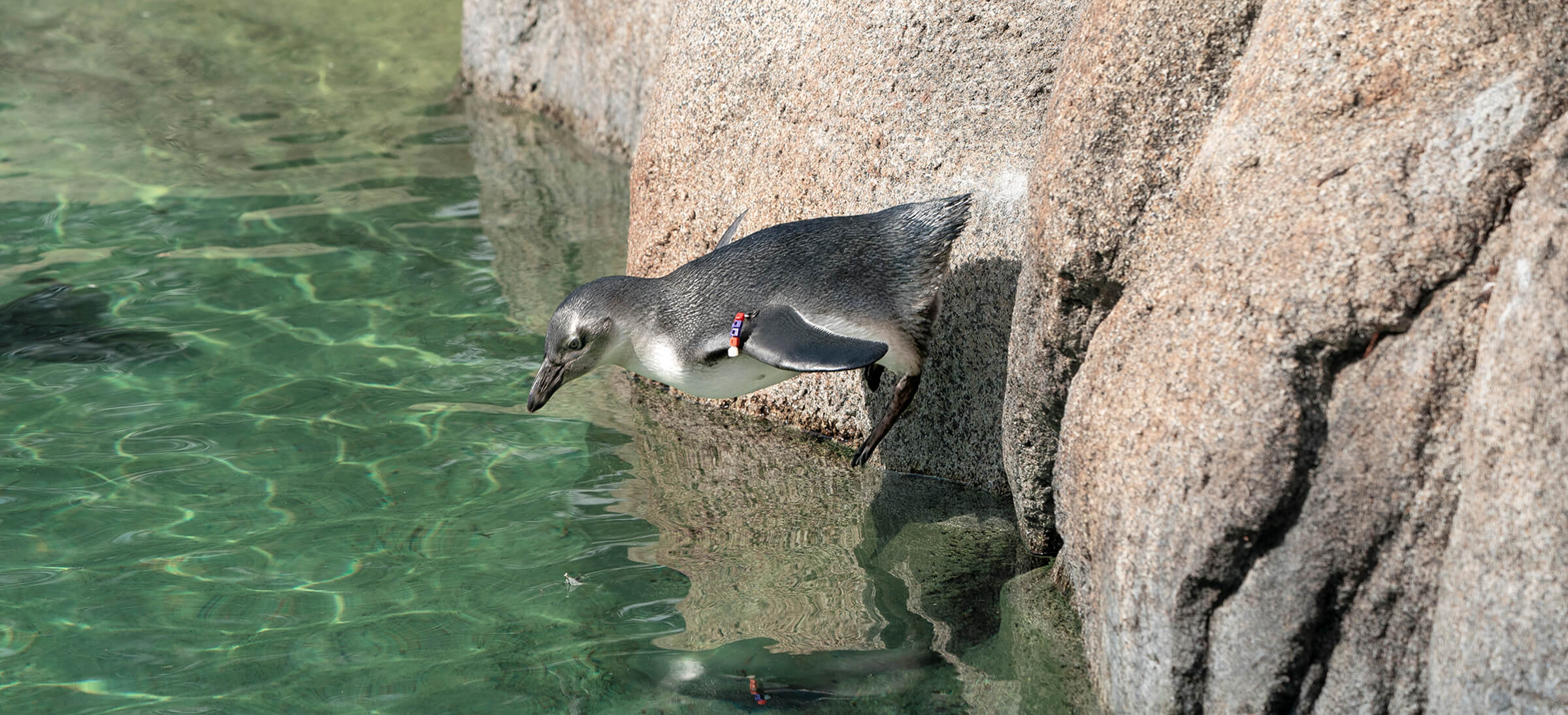
AN ENDANGERED POPULATION
African penguins are categorized as Endangered, with only around 23,000 breeding pairs left. That’s a far cry from 100 years ago, when there were more than one million African penguins. While commercial harvesting of penguin eggs and guano (droppings) ended in the late 20th century, other threats—including a lack of food due to overfishing, climate change, oil and marine pollution, the emergence of avian influenza A (H5N8), and habitat degradation—have led to a continuing decline. San Diego Zoo Global (SDZG) participates in the Association of Zoos and Aquariums’ Species Survival Plan to maintain a protected assurance population of African penguins. SDZG also partners with the Southern African Foundation for the Conservation of Coastal Birds (SANCCOB) on conservation work to help these penguins in South Africa, including rescue, rehabilitation, and tracking upon
release.
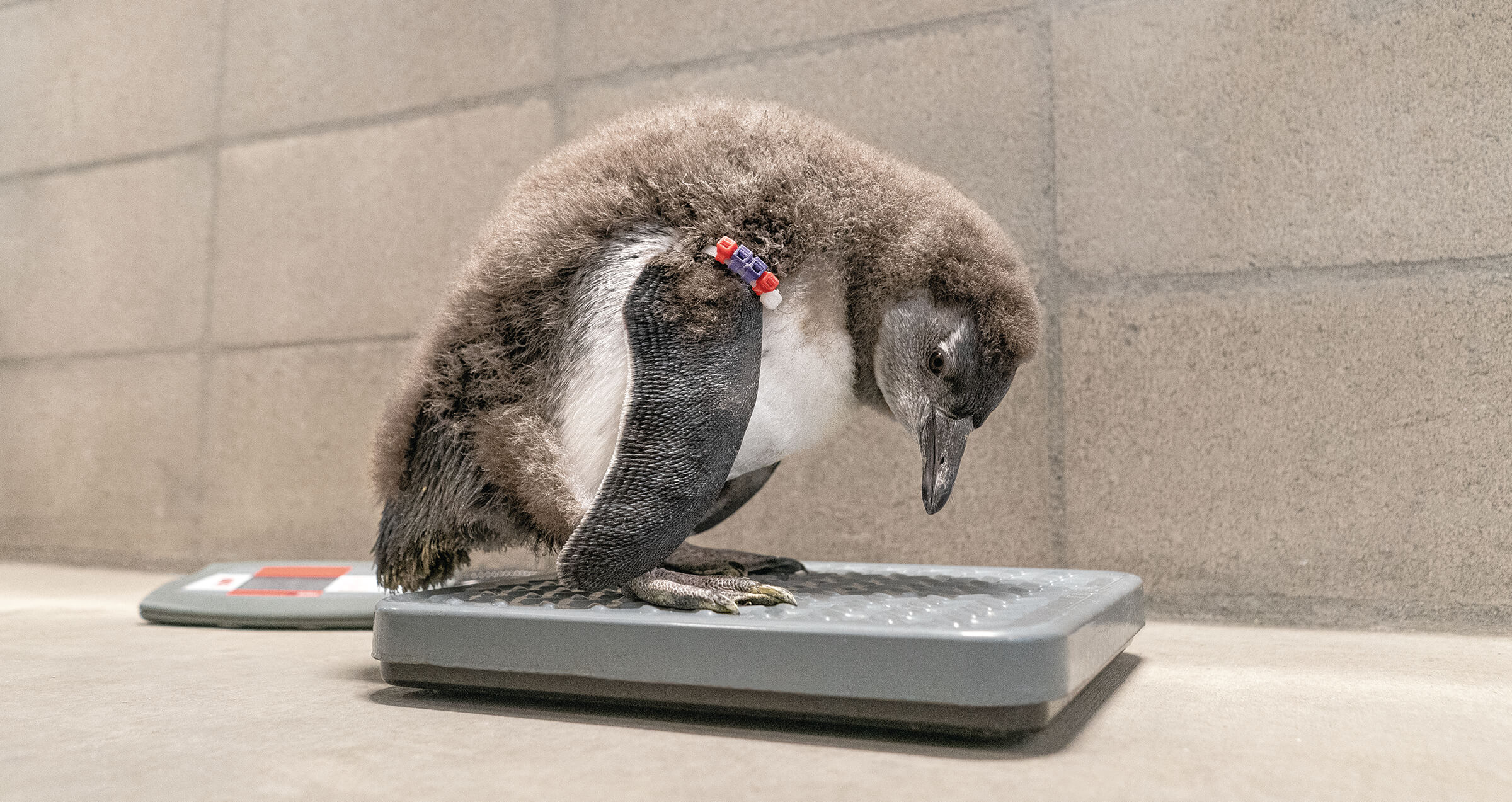
 Dive into Penguin Beach, a web-series on the Zoo’s social media channels, beginning
Dive into Penguin Beach, a web-series on the Zoo’s social media channels, beginning
October 10, 2019.
Growing Chicks
When Africa Rocks penguin chicks Doug and Barbara were no longer spending all their time under their doting parents, it was time for them to get to know the animal care staff. Building a relationship with keepers is important, in order to provide effective husbandry care for the penguins, Lara explained. “We want them to know that we are a source of care, and food.”
Keepers started hand-feeding the chicks small boneless fish filets. “As they grew, we gradually introduced them to whole fish—herring and capelin,” Lara said. The growing chicks, like the adults in the exhibit, get vitamins concealed in their hand-fed fish, along with medications they may need.
After the chicks became comfortable with the keepers, it was time for their first swim in the pool. Lara and fellow keeper Debbie Denton donned wet suits and got in first. “Barbara followed us right in, but Doug stayed at the water’s edge,” Lara recalled. “He was probably thinking ‘I don’t know about this,’ but then he trusted us enough to follow us in. Doug was a clumsy swimmer at first, but like Barbara, he learned very quickly.”
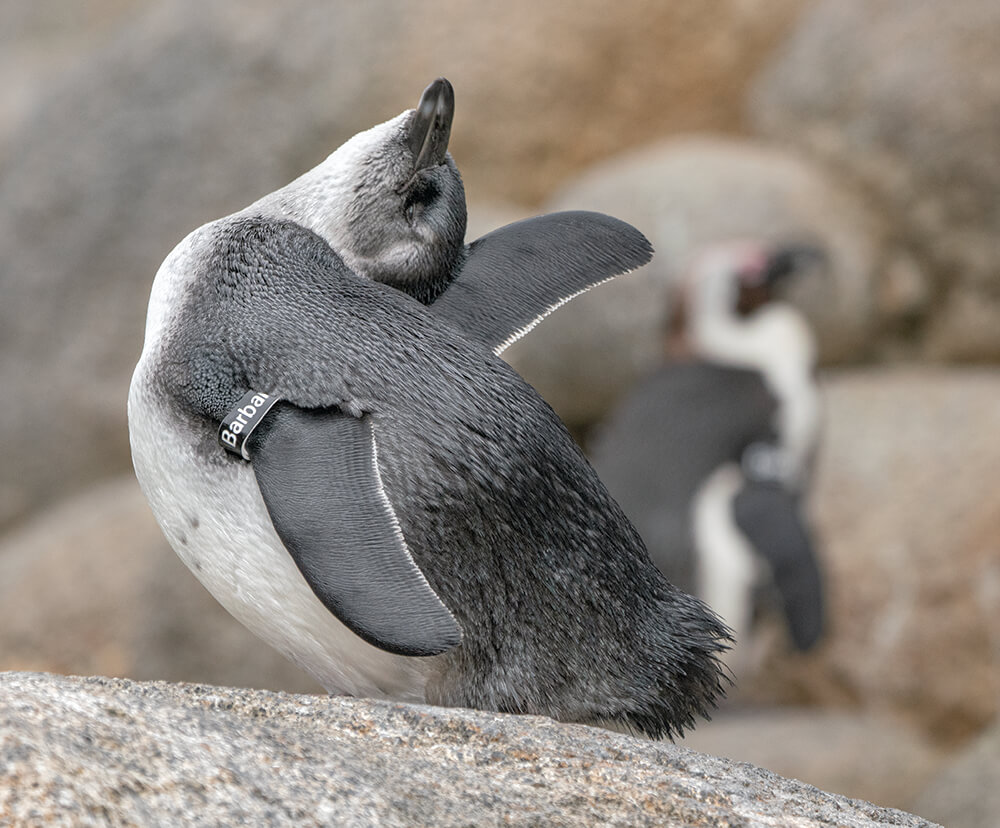
ACHIEVING MILESTONES
Under the watchful eyes of keepers, chicks Doug and Barbara learned to eat whole fish, started putting on weight (as evidenced by regular weigh-ins), became confident swimmers, and began interacting daily with other members of the Zoo’s African penguin colony.
Soon, the chicks were introduced to other areas of the exhibit, spending a day out with the adults. “Barbara was comfortable right away, but Doug just wanted to be a baby, making chick noises,” Lara said. “If you’re a penguin chick, the two things you want to do around adults are to avoid attracting attention to yourself by making chick noises, and to stand your ground if challenged.”
After four days of daytime exhibit visits, the two chicks got a chance to stay there all night. “Barbara spent most of the time in the water, and Doug was in a new spot all the time—every rock he could possibly sit on—until he found ‘his rock’ in the middle of the exhibit, where he can see everything that is going on,” Lara said. “He started to defend himself instead of running. Barbara recently joined him in that spot, since she really didn’t have one of her own. Both have now figured out when it’s feeding time, both morning and afternoon. Before, they would just come up to us any time they were hungry, like they were asking ‘is it dinner time yet?’”
The two get weighed weekly. “We want to see that they maintain their weights, and we watch as they settle in and get completely familiar with the rest of the colony,” Lara said. Keepers also look at their feet to see how active they are.
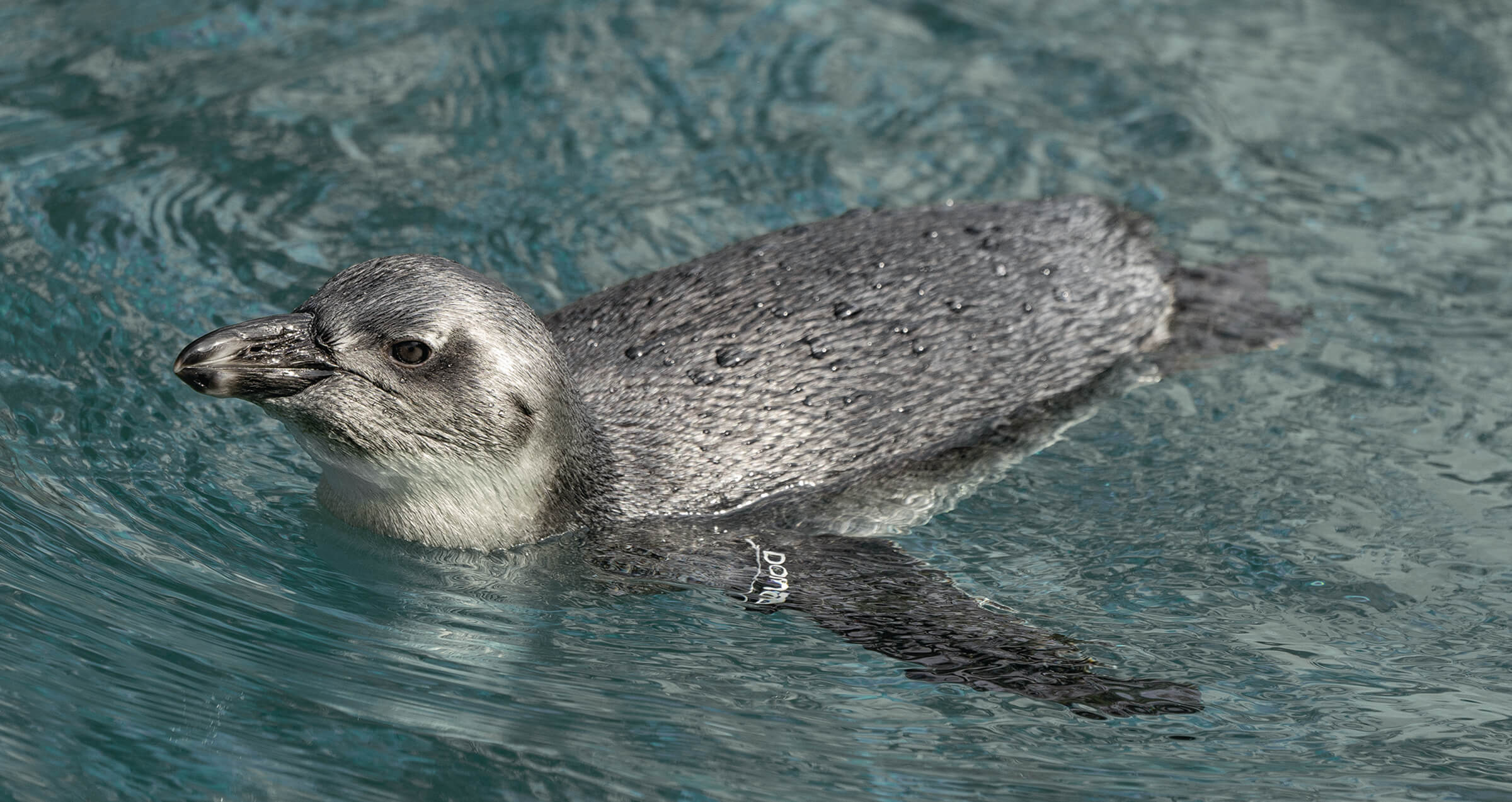
Changes ahead
While Doug now has his “spot” to hang out in, Barbara has begun making friends with adults in the colony. “Barbara has been hanging out with Gayle and Lori, who are troublemakers—but it’s good to see she’s socializing,” Lara said. “She’s made more friends than Doug has, but he’s a male and he’s just defending everything, for now.”
“These guys are big characters,” Lara added. “Doug has stayed pretty sweet. He will sit in a keeper’s lap and likes to get his back scratched—that is, when we get him by himself. Barbara wants to be right on your heels when you’re in the exhibit, hanging out with you.”
September is when the penguin colony’s thoughts will soon gently (or not so gently) turn to nesting season. “The colony will be involved in pairing up, and all the drama that goes with that,” Lara said. “We will be watching to see if Doug and Barbara will be excited about all the shenanigans going on with the adults, or whether they will just lay low.”
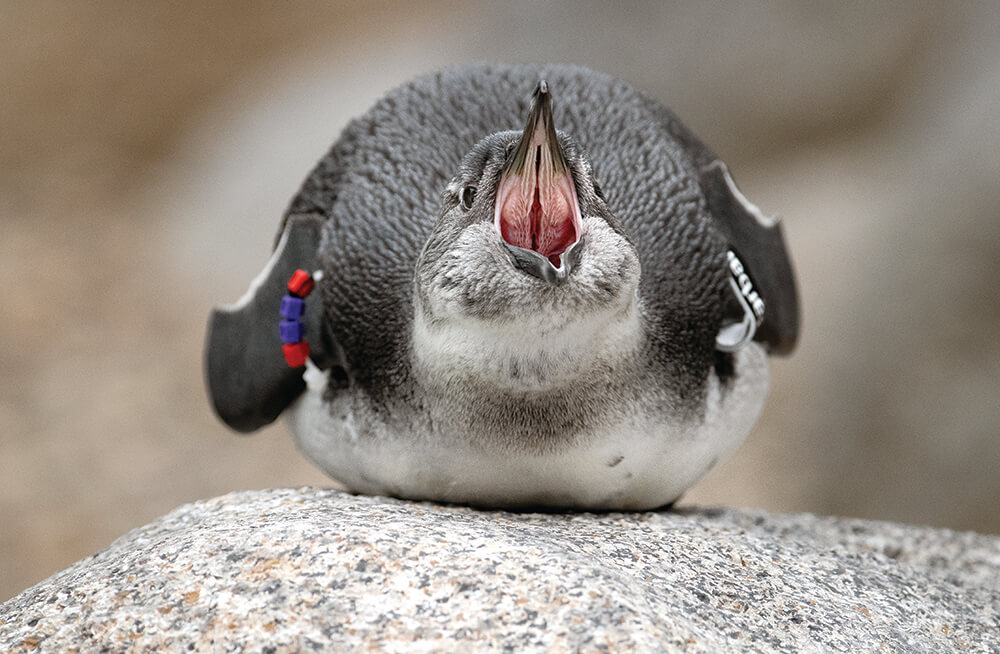
ON THE ROCKS
Doug picked out “his” rock in the middle of Penguin Beach, where he can observe all the goings-on in the Zoo’s active African penguin colony—and Barbara (pictured here) has often joined him in that spot.
What else does the future hold for the growing chicks? They will go through their first molt at about a year and a half old, which is a major step, Lara said. “Molting is very awkward. They will be wondering, why am I swelling and puffed up? Why am I so hungry?” And they will go from the bluish juvenile coloration to their adult black and white.
After they go through the first molt, they will go through their first breeding season. “That’s when they start to ‘play house,’ and they may find a mate,” Lara said. However, Barbara probably won’t lay her first egg until she is two or three years old, so major milestones lie ahead.
For now, the chicks are just enjoying being chicks, and they’re still finding their place in the lively colony at Africa Rocks. Watch them—at the Zoo, or online on Penguin Cam—as they transform from awkward youngsters to savvy adult penguins!



